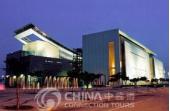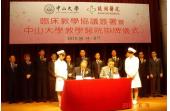With buildings of oriental and western styles existing together,
the Historical Centre of Macau is so far the most ancient, the
largest, and the most well-preserved historical site in China.
Inside the historical centre, there are ruins of the most ancient
churches and monasteries, the most ancient Christian burial ground
and western emplacement, the first western theater, the first
modern lighthouse and the first western university. Altogether
there are more than 20 historical sites in the historical centre,
including the Ama Temple, Monte Fortress, St. Dominic’s Church and
so on.
As the first occupied territory established by European countries
in East Asia, the historical centre is the witness of the
communication between the western culture and Chinese culture in
Macau for more than 400 years. Because of the Chinese and western
cultural exchanges, most of the buildings there are endowed with
fusional cultural characteristics.
The comments from the World Heritage Committee are as follows: the
Historical Centre of Macau is the witness of the development of the
western religious culture in Far East regions, and the historical
origin of Chinese folk religions, which were then introduced to the
western world; and it is the comprehensive integration of Chinese
and western architectural styles.
Therefore, this historical centre is the earliest and the most
important place that received the most western relics and cultures
in China. At the same time, it is the first stop for western
architectural styles to be introduced into China in modern times.
For this reason, in the 29th World Heritage Committee Meeting,
which was held in South African in July 15, 2005, the Historical
Centre of Macau was added into the World Heritage List.











